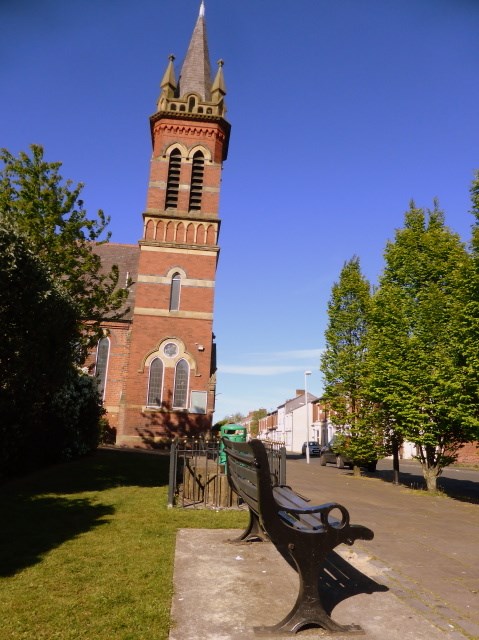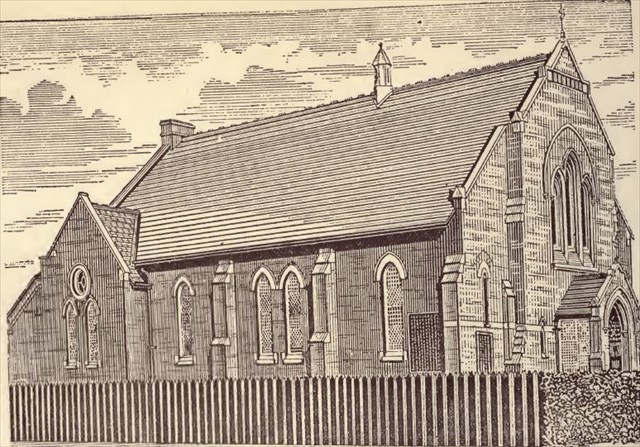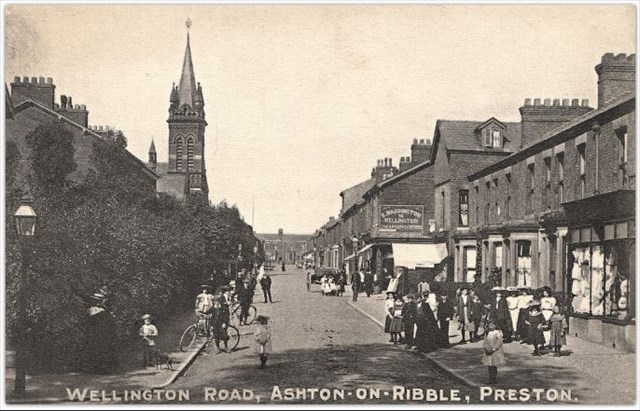Church Micro 10847 . . . Ashton Methodist
 The cache, a small screw-capped camo'ed and magnetic sample tube, is hidden at the front of this church which has a been a centre for worship in Ashton for some 134 years.
The cache, a small screw-capped camo'ed and magnetic sample tube, is hidden at the front of this church which has a been a centre for worship in Ashton for some 134 years.
For fascinating and detailed information on the development of the Ashton area in the 19th and early 20th century see GC4XPE9: Church Micro 5133 - Ashton.
If you would like to add to the Church Micro series yourself then please visit http://churchmicro.co.uk/
There is also a Church Micro Stats & Information page that can be found at
http://www.15ddv.me.uk/geo/cm/index.html
A Short History
(adapted from The Makers Of Wesleyan Methodism In Preston And The Relation Of Methodism To The Temperance & Teetotal Movements, by W Pilkington, 1890). For more detail, see here pp90-95.
Methodist preaching in Ashton began in the summer of 1866 - outdoors on the local marshes. One of the preachers opened his house in Hull Street for Sunday evening services but this soon became too small and two cottages were procured and combined together in Swansea Street where in 1867 the first Wesleyan Sunday School was started and divine services established. But even this also quickly became inadequate as the area was experiencing rapid growth with a busy local wagon works and flourishing ship building.
In early 1869, part of the pattern room of the ship-building company was secured for use for Sunday school and conducting public worship with seating for about 100. Average congregations were 80-100 entirely consisting of working (class) people. This was a 'rickety room where champagne luncheons were given after ship launches, and dancing indulged in until the small hours of the morning'. In winter it 'required three mammoth stoves, that just raised the temperature a few degrees above freezing point' it also had 'eighteen steep, awkward steps which the people had to climb at the risk of breaking their necks to get into this dingy old room'.
Steadily increasing congregations meant that even more space was needed and a piece of land was obtained on the west side of the Preston and Wyre Railway arches, at the bottom of Waterloo-road, on the boundary line of Ashton and Preston. The foundation stone of a School-Chapel was laid on 18 June 1870 and the building erected at a cost of £600. It was  opened by the Rev G Scott on Sunday 24 September 1870.
opened by the Rev G Scott on Sunday 24 September 1870.
In 1872, an extension was added to house a day school (there being none nearby) at a cost £300, the money being raised by 'bazaars, sewing meetings, and Christmas trees'. Thoughts next turned to building a chapel and land was bought in 1877. However it was not until 4 years later that a Building Committee was brought together to coordinate the building process. The foundation stones were laid at a special ceremony on 2 September 1882 - these are the stones seen within the small railed enclosure at the front of the church.
'The site for the new structure was a very eligible one, along the tram route, the entrance facing Wellington-road, at the corner of Tulketh Avenue, standing midway between villadom and cottagedom. Within a circumference of a quarter of a mile from the chapel, reside manufacturers, solicitors, doctors, architects, commercial men, ship owners, and artisans, men who have made fortunes, and some who have lost them. The need of a Nonconformist place of worship in this locality had long been felt'.
 The new chapel (see Gallery illustration), erected for about £1,350, was 52 feet long by 30 feet wide and had seating for 250. It was opened on 28 March 1883 by the Rev C Garrett who preached to a packed congregation - 'the vestry and classroom (also) being filled'. Later at unknown dates a day school and a steeple were added to the chapel.
The new chapel (see Gallery illustration), erected for about £1,350, was 52 feet long by 30 feet wide and had seating for 250. It was opened on 28 March 1883 by the Rev C Garrett who preached to a packed congregation - 'the vestry and classroom (also) being filled'. Later at unknown dates a day school and a steeple were added to the chapel.
The church was renovated and refurbished in 2005 to provide modern, multi-purpose facilities. In 2010 a further two meeting rooms with related utilities were installed on the first floor.